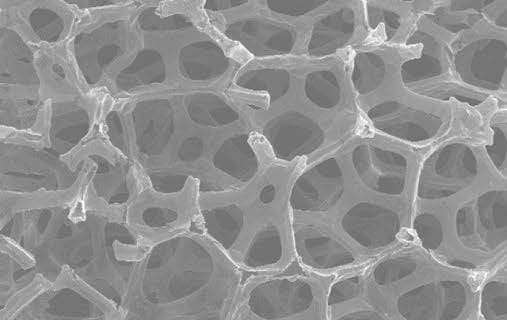
High-quality graphene foams have been made from the waste gases produced during the high temperature treatment of organic waste. Researchers in China say their pyrolysis-based technique is cheaper and more environmentally friendly than conventional production methods.
The materials are structurally similar to conventionally manufactured graphene foams, say Hong Jiang at the University of Science and Technology of China in Hefei and colleagues. The foams also display similar electrical-transport performance and were able to filter and absorb liquids such as benzene and paraffin, just like other graphene products.
Graphene foams are porous, 3D versions of the 2D sheet of carbon that is conventional graphene. Like other forms of graphene, they are super strong, have a high electron mobility and are great conductors of heat. The foams have a wide range of potential uses, including in energy storage, environmental purification, chemistry and biosensing.
Chemical vapour deposition
Graphene foams are normally produced by chemical vapour deposition. Carbon containing gases, such as methane, and carrier gases are introduced to a heated metal foam substrate – usually nickel or copper. As the gases contact the substrate, they deposit a film of carbon atoms. Once the reaction is complete, the metal is etched away leaving behind a 3D lattice of graphene.
Chemical vapour deposition is expensive and uses large amounts of hydrogen, methane and other gases – which is why Jiang and colleagues set out to produce graphene using the carbon-rich waste gases from bio-refineries that run off organic waste. These facilities heat biomass to 500 °C or more in the absence of oxygen to produce alternatives to crude oil-based products, such as biofuels. This process, known as pyrolysis, has been used for thousands of years to produce charcoal.
The team set up a high-temperature pyrolysis system and produced graphene foams using two different feedstocks: powdered cellulose and powdered lignin – both derived from plants. The powders were pyrolysed at 800 °C and the waste gases filtered to obtain small-molecule gases. These purified gases were then fed into a chemical vapour deposition chamber and deposited on nickel foam.
Various techniques, including Raman spectroscopy and scanning electron microscopy, were used to probe the structure of the graphene foams. “Both products are good quality with no obvious defects,” Jiang told Physics World.
Straw and sawdust
But powdered cellulose and lignin are not the same as biomass waste. To simulate more conventional organic waste, the researchers next fed their system straw and sawdust. The graphene foams produced showed minor drops in quality compared with those from cellulose and lignin. The researchers say, however, that all the foams they made exhibit uniform structures and excellent performance in environmental or energy-storage applications.
Materials rich in lignin, cellulose and hemicellulose would be best for producing 3D graphene foams, Jiang says. But other organic waste could be used. “The quality of 3D graphene foam may be influenced by other elements of biomass waste,” he explains. “For example, nitrogen or sulphur could be doped into the obtained products if feedstocks contain high amounts [of these elements].”
Edward Randviir, a chemist at Manchester Metropolitan University, who was not involved with the research, told Physics World that as graphene production usually relies on fossil fuels or pure graphite, a critical rare material, looking into alternative production methods is a worthwhile pursuit. He adds that the work shows that producing graphene from renewable biomass is “quite clearly feasible”.
Life-cycle analysis
A life-cycle analysis found that producing graphene foams from the pyrolysis of saw dust uses less energy and has a smaller environmental footprint than a conventional chemical vapour deposition process using methane. Biomass-derived foams had a lower impact in 15 out of 18 categories, including global warming and land use.

Laser-induced graphene for ‘edible electronics’
As well as graphene foams, Jiang’s process also produces bio-oil. The team say that making a high-value product like graphene alongside such biofuels could make improve the economic viability of biomass pyrolysis and support its wider commercialization.
Randviir is not convinced by this, however. While he thinks there is potential in producing graphene from organic waste, he questions whether it can be done on a large scale. And, if it is possible, the economics may change. Graphene is currently expensive because no one has figured out how to produce it on an industrial scale, he explains. If they did, the price would drop, adding less value to the pyrolysis process.
Jiang and his colleagues are now looking to explore the relationship between the yield of graphene foams and bio-oil, and further evaluate the cost and value of their process. They also wish to enlarge the size of the graphene foams and better control the number of graphene layers, Jiang says.
The research is described in Nature Sustainability.



